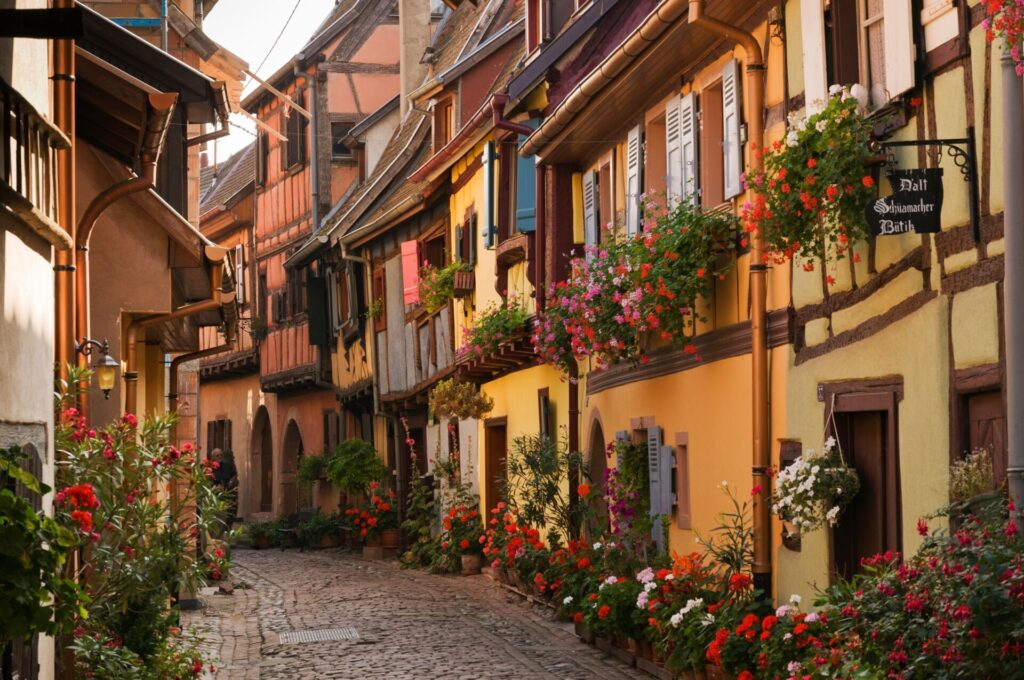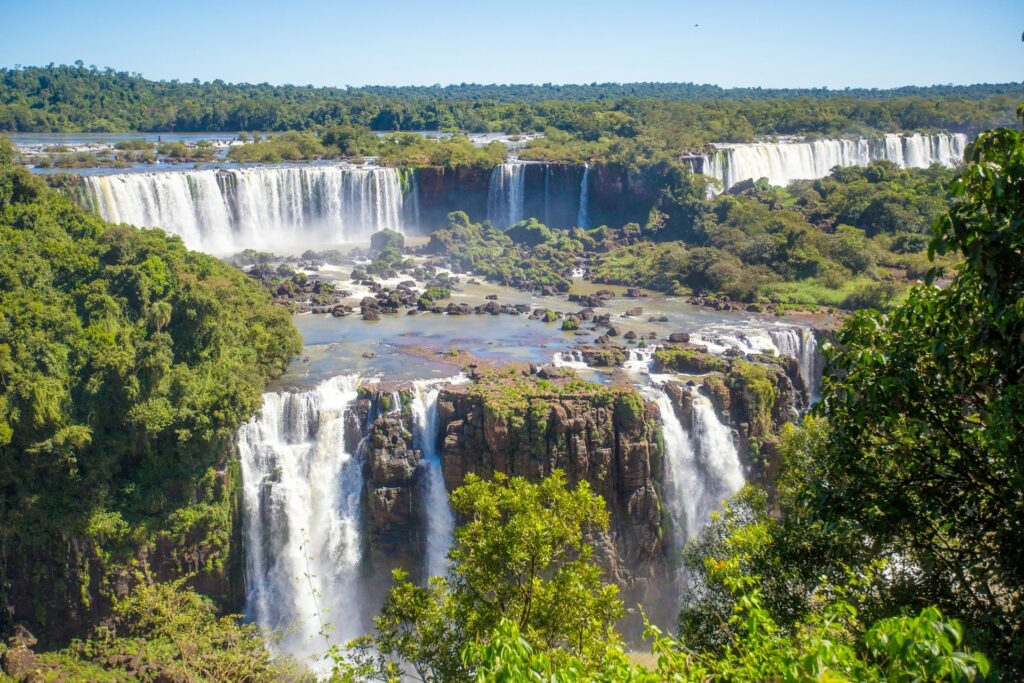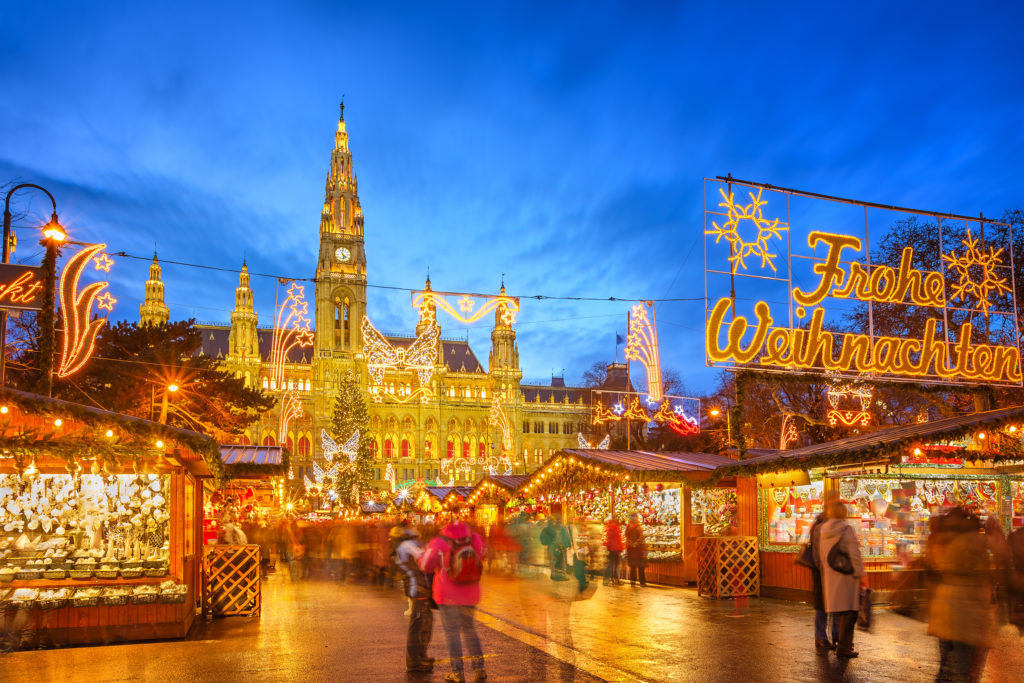The Legacy of the Berlin Wall, 35 Years On
During the night of 9th November 1989, after a wave of revolutions, the Berlin Wall fell. This year marks 35 years since its demolition, and so to find out more about why the wall was built, life on either side, and the aftermath of its eventual demise, we spoke to our Local Expert in Berlin, Walid.
Walid was born and raised in London, but currently lives in Berlin and is especially passionate about how the city is a melting pot of people from all walks of life. Walid’s lifepartner is a former east German, while his days touring in a rock band took him into former West Germany, giving him perspective from both behind and ‘in front’ of the Iron Curtain.
Before the Berlin Wall
Before the wall was built, Berliners on both sides of the city could move around freely, crossing the East-West border as they pleased, while public transport carried people back and forth.
But Berlin was split long before the wall was built; after World War II ended in 1945 the nation was split into four allied occupation zones, with East Germany going to the Soviet Union and West Germany going to the US, Great Britain, and France. “Everything was based around West Berlin, because West Berlin belonged to America and it was surrounded by Soviet territory,” Walid explains. “East Berlin was the capital of East Germany, and East Germany was part of the Soviet Union.

The Berlin Wall’s border length around West Berlin was 155 km (96 miles)
DISCOVER MORE ON
Berlin itself was already divided into 22 different districts. “It just so happened that the French, British and American zones become unified into one unit (West Berlin), and then East Berlin. Technically, those zones were already divided up before World War II ended,” says Walid.
In 1952, the East German government closed the border with West Germany, but the border between East and West Berlin remained open – until 1961, that is.
Why was the Berlin Wall built?
After orders from the Soviet Union’s leader Nikita Khrushchev, the Berlin Wall was erected overnight on 13th August 1961. It was originally made of barbed wire and cinder blocks, but evolved to become a series of concrete walls reaching up to 4 meters (13 feet) tall.
“It came about because there were 2,000 East Berliners leaving into West Berlin every single day,” Walid says. “It was an untenable outflow of East Berliners, and not just anyone – it was the educated people that were going, and they had to be stopped somehow. The wall was the only way to stop that.”
The East and West divide wasn’t only limited to Berlin – you also had the 1,381 kilometer-long (858 miles) Iron Curtain which stopped people leaving into West Germany. “There was literally a physical border, the inner German border, known as The Iron Curtain. It was a five-mile-wide minefield that started in Finland and went all the way down to the Mediterranean,” Walid explains. “It was pretty much impossible to go through the Iron Curtain into West Germany, and then the Berlin Wall would stop people going from East Germany into West Berlin.”
Save up to $3,000* per couple on your first Premium Tour
Plus receive latest offers, travel inspiration, and discover how your travels will make a positive impact. Together, WE MAKE TRAVEL MATTER®. Subscribe NowLife with the Berlin Wall
“I was not there at the time, but I have relations who were on both sides,” says Walid. “Life in East Germany away from the wall in East Berlin meant life was nice, insofar as everybody would go out into nature. It was a very close community.”
The cultures on either side of the wall were further polarized. “In East Berlin, families would say that West German culture was an ‘elbowing to the front of the queue’ lifestyle, something they did not take part in,” Walid says. “West Germany, on the other hand, was rebuilding after World War II and was becoming a capital like any Western country that we know. Money was already being poured in there, and then Frankfurt was the Business Center.”
The Berlin Wall was made up of two parallel walls, with a strip of land known as the ‘death strip’ between them patrolled by guards with machine guns. Around 5,000 East Germans managed to cross the Berlin Wall successfully, but another 5,000 were captured by East German authorities in the attempt, and more than 100 people died trying to cross the Berlin Wall throughout its history.

One of the Berlin Wall’s most famous murals is Dmitri Vrubel’s Fraternal Kiss, painted in 1990
When did the Berlin Wall fall?
In the lead-up to the fall, East German leaders had attempted to calm mounting protests by loosening the borders and making travel easier for East Germans, but there was no intention to open the border up completely. This was compounded by Mikhail Gorbachev, a relatively young Soviet leader who took power in 1985, who introduced a reform policy of “glasnost” (openness) and “perestroika” (restructuring), “basically demonstrating the weakness of the Soviet Union by that time,” Walid says.
East Germany’s communist leadership was forced from power in October 1989, and the Berlin Wall fell shortly after on 9th November 1989 – 28 years after it was first put in place. The fall came five days after half a million people gathered in East Berlin in a mass protest against the Berlin Wall.
East Berliners flocked to border checkpoints, and chants of “Tor auf!” (“Open the gate!”) could be heard until border guards let the crowds through, where West Berliners welcomed them on the other side with flowers and champagne.

Life after the Berlin Wall
While the fall of the Berlin Wall marked the end of the Cold War and the unification of Central and Eastern Europe with Western Europe, and gave Berliners back their personal freedom, it’s not the end of the story. “Life after the fall of the Berlin Wall is still evolving in a sense, because it’s only been 35 years,” says Walid.
The fall of the Berlin Wall was the first step towards German reunification, but it didn’t solve all the city’s problems. “West Germany joining with East Germany, and West Berlin joining with East Berlin, was supposed to be wonderful. But already a lot of former East Germans are saying that they were never brought to the table to discuss how the new Germany should look, and there are a lot of complaints about that.”
“There was a survey relatively recently where a large percentage of East Germans and West Germans want the wall back. It’s a concept called ‘Wall in the Head’ or ‘Mauer im Kopf’. It’s not become the utopia that it was supposed to be on paper.”
Meet Walid and learn about German history on an Insight Vacations tour to Germany.

LIKED THIS POST? SHARE WITH YOUR COMMUNITY



